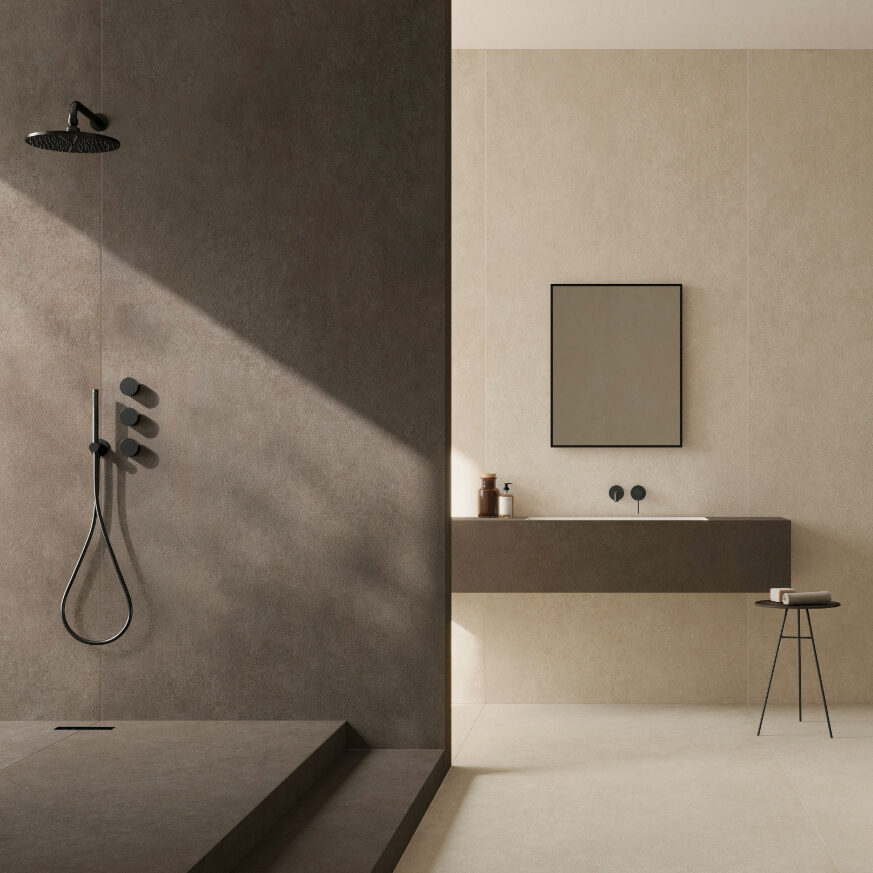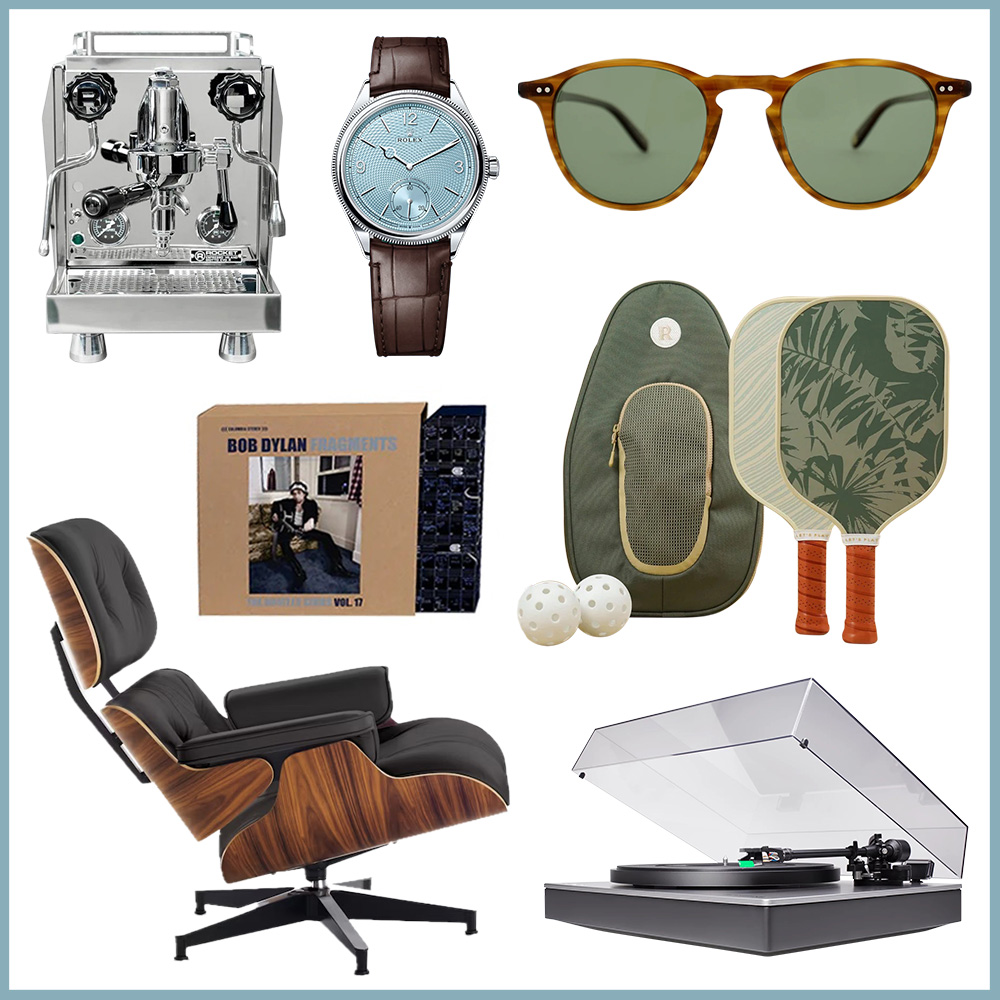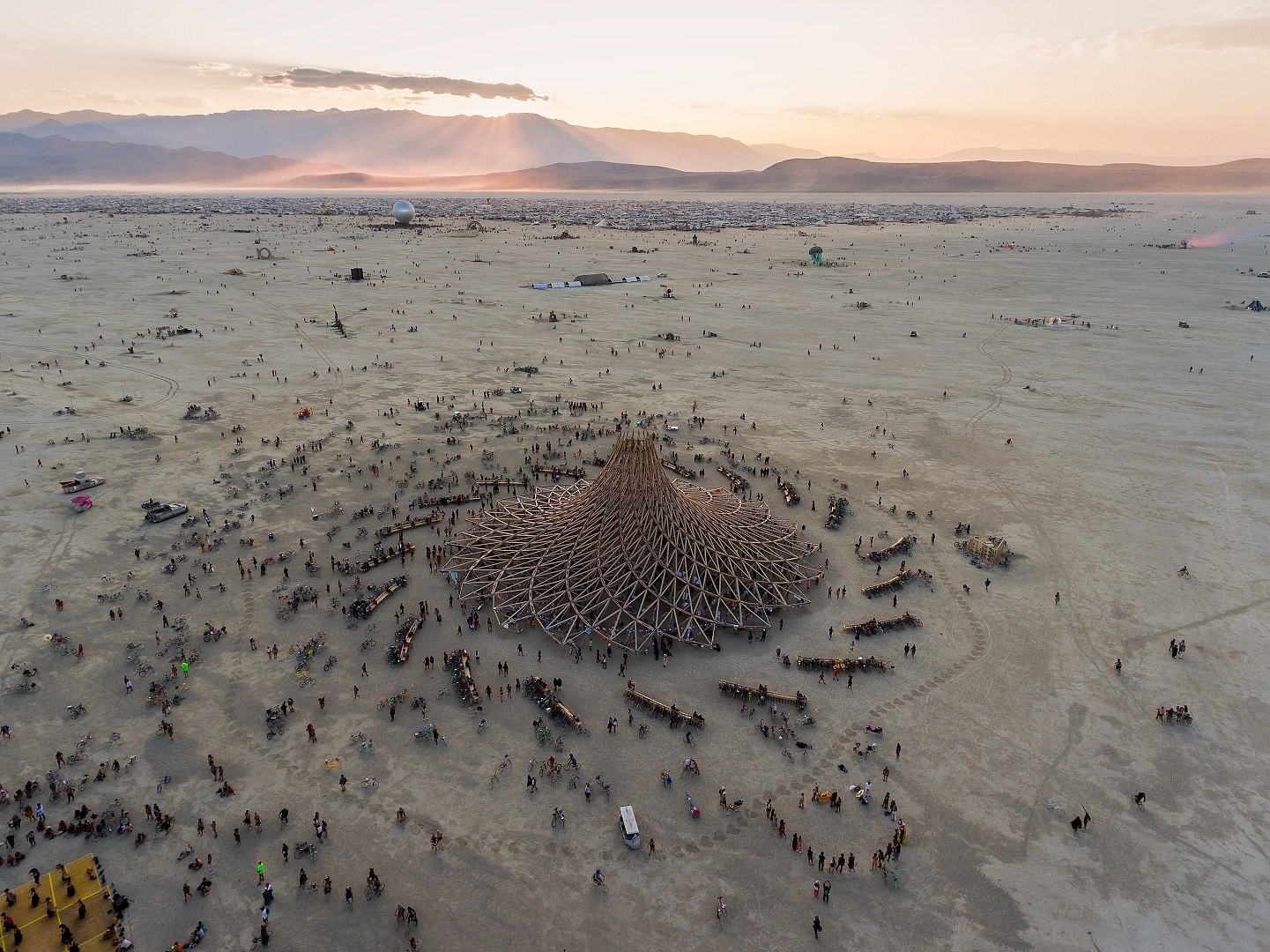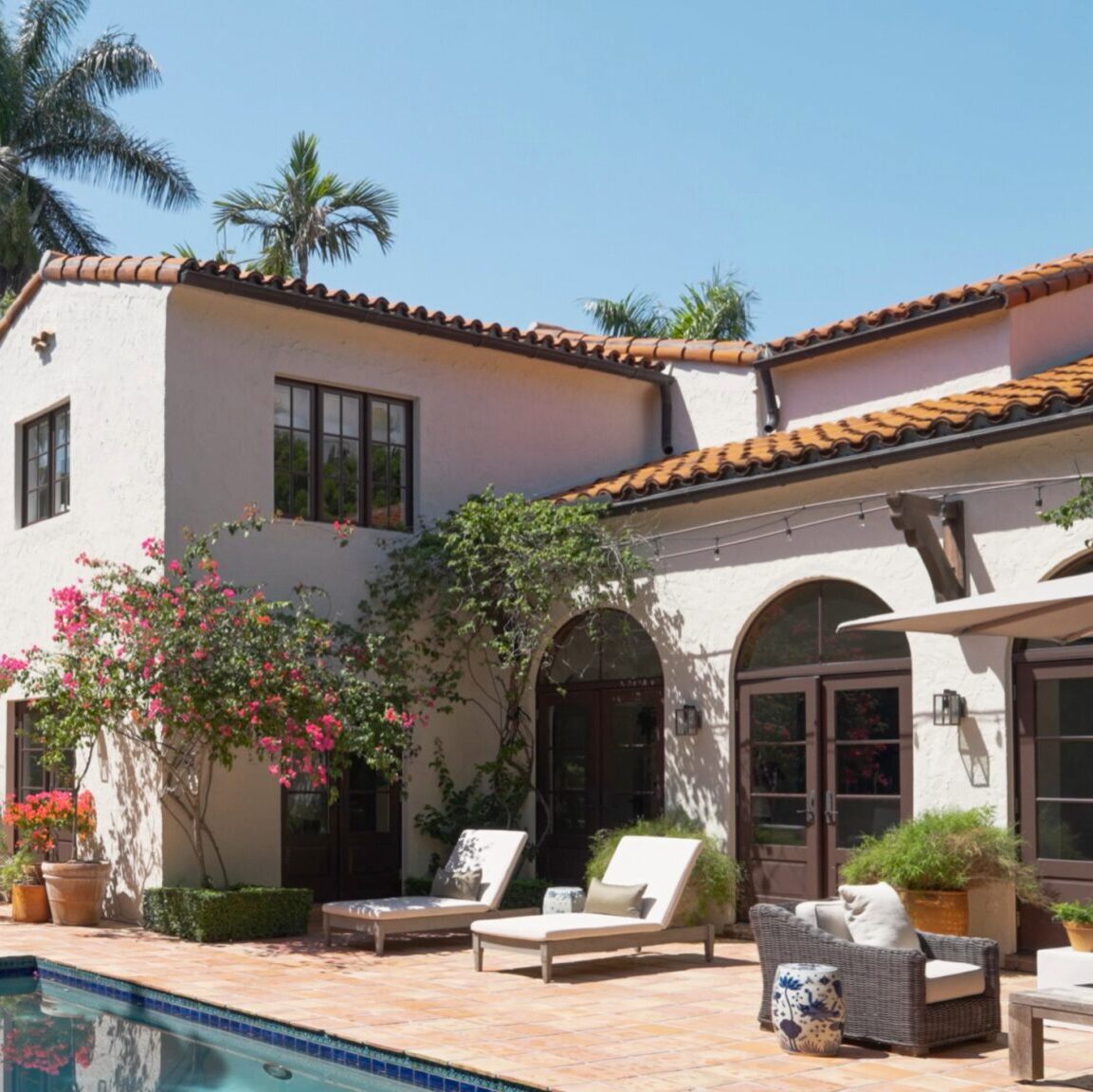Since it kicked off in 2022, the annual WOW!house showcase at Design Centre Chelsea Harbor in London has drawn visitors from around the globe to top-tier designers (think Veere Grenney, Ken Fulk, Sophie Ashby) transform bare-bones spaces into veritable wonderlands. But it’s not just the interiors that wow: The structure’s façade, covered in intricate three-dimensional wooden mandalas, has become as synonymous with the event as the talent within.
The mastermind behind the art installation is Arthur Mamou-Mani, a French (and now London-based) architect whose proclivity for ingenious fabrication processes and material use has made him a go-to resource for projects from the hospitality to commercial spheres and even within the metaverse. We caught up with him to learn more about his practice, his process, and what’s next in the world of sustainable design.
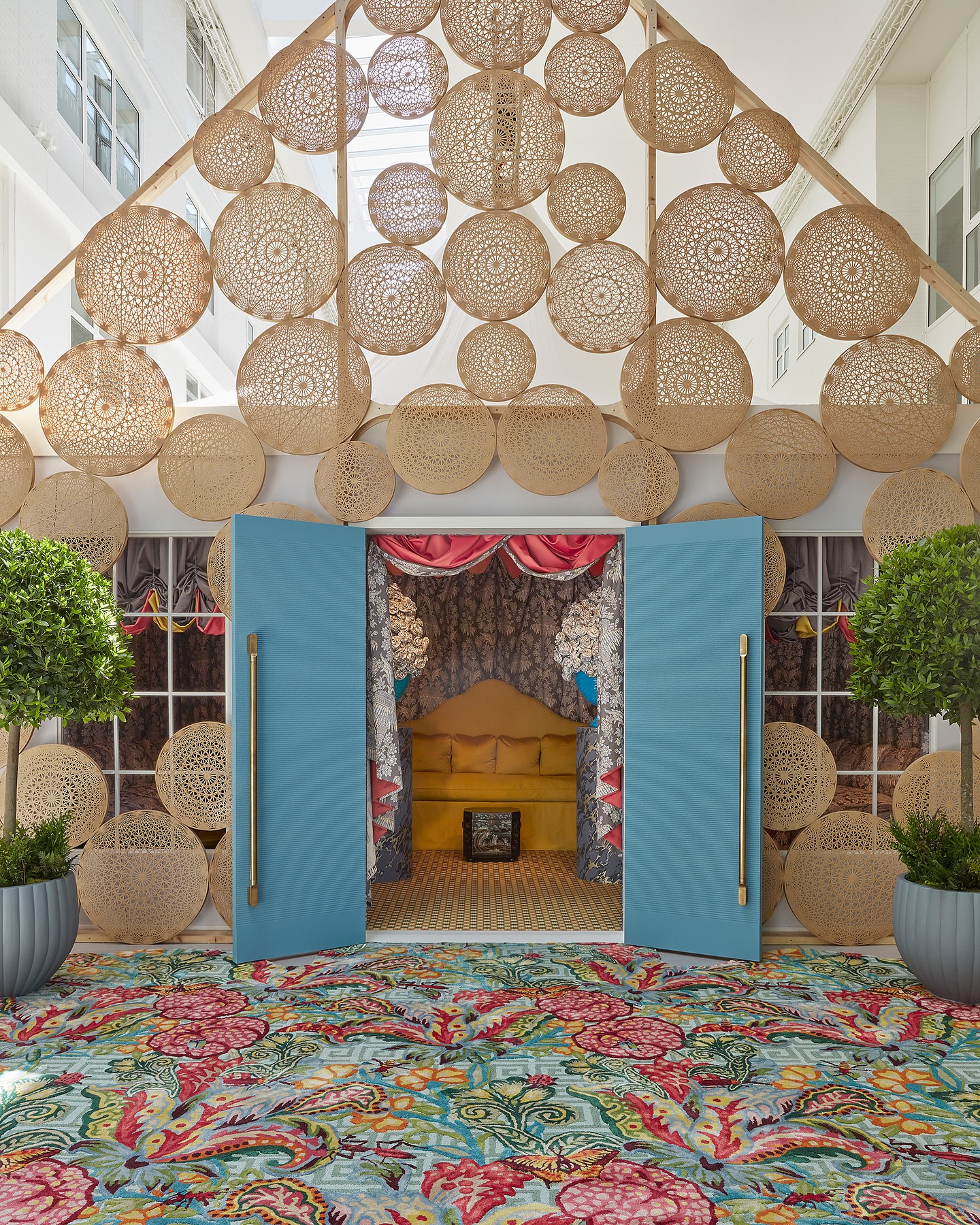
Wooden mandalas—or circular shapes used for meditation—adorn the façade of the annual WOW!house at London’s Chelsea Harbour Design Centre.
Milo Brown PhotographyHow did you become interested in the world of 3D fabrication?
I’m trained as an architect. At the time when I was a student in London at the Architectural Association, there was an emergence of two new movements: what we call parametric design, and 3D printing—or digital fabrication—as a whole. It was really exciting because you were able to link a creation within a computer to the physical world, which changed the usual relationship where designers would draw something, then give it to a fabricator. Now, it would be a direct loop where we could test our outputs directly. It completely turned at least my world upside down because I realized you could be more like a gardener as an architect, growing beautiful, natural things, and evolving them rather than just always try to be a visionary of sort.
Tell us about your studio and the process behind it.
We have an architecture studio, Mamou-Mani Architects, and then we have a communal space, FabPub, which is open to the public. We get a lot of hospitality projects, as well as people who ask us to 3D print unique items simply because they don’t want to buy something off the shelf. It goes as big as an entire restaurant installation and as small as someone who wants to make 300 tiny figurines. I’m really enjoying seeing who comes through the door. We recently had Jamiroquai come in to do a moving copy of his hat—it was really fun.
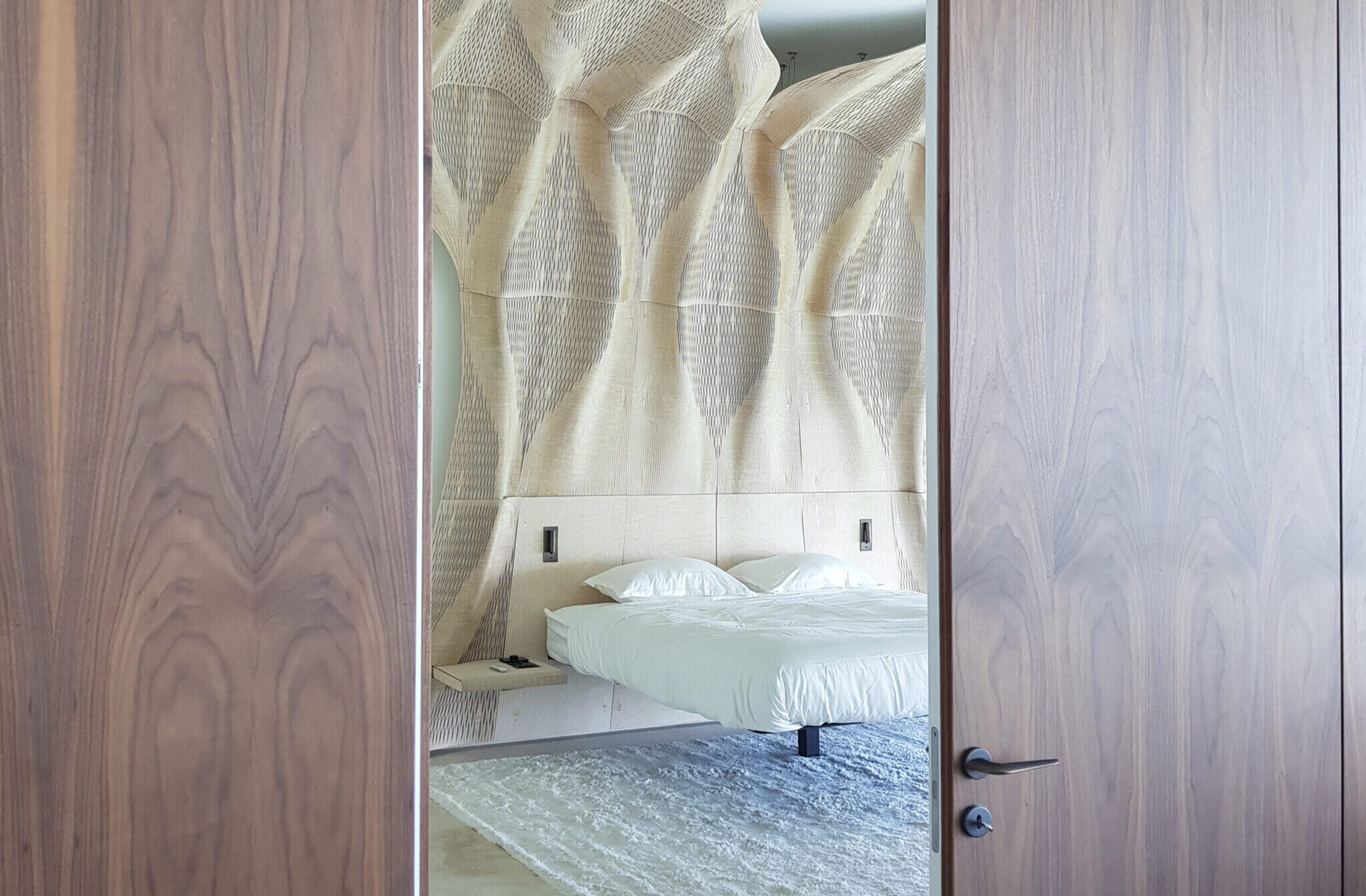
For a project in Miami, Mamou-Mani created a series of 46 symmetrical wave-shaped wood panels that were installed from floor to ceiling.
What kinds of materials do you use?
The idea was to focus on sustainable 3D printing so that we would be able to provide a full circular service. We compound mostly biomaterials, which are materials that come from renewable sources. In our case, we use sugar, which is fermented and mixed with wood-based pigments. It can be composted, but we also offer a “take back” scheme where [the client returns the structure to us] and we crush it, turn it into pellets, and then put them in the printer. I find that super exciting because it means we can be wasteless in a way. We also encourage clients to repurpose or reuse our installations, like WOW!house has been doing. It’s a different way of thinking.
How are you reinterpreting the WOW!house pieces for this year?
One benefit of the modular system is that each year you can assemble it in a new combination. The mandala design is based on what’s called a mystic rose: You take a circle, divide it into points, and then you interconnect all of those together. So we’ve been iterating on that. The light effect you get is just really stunning.
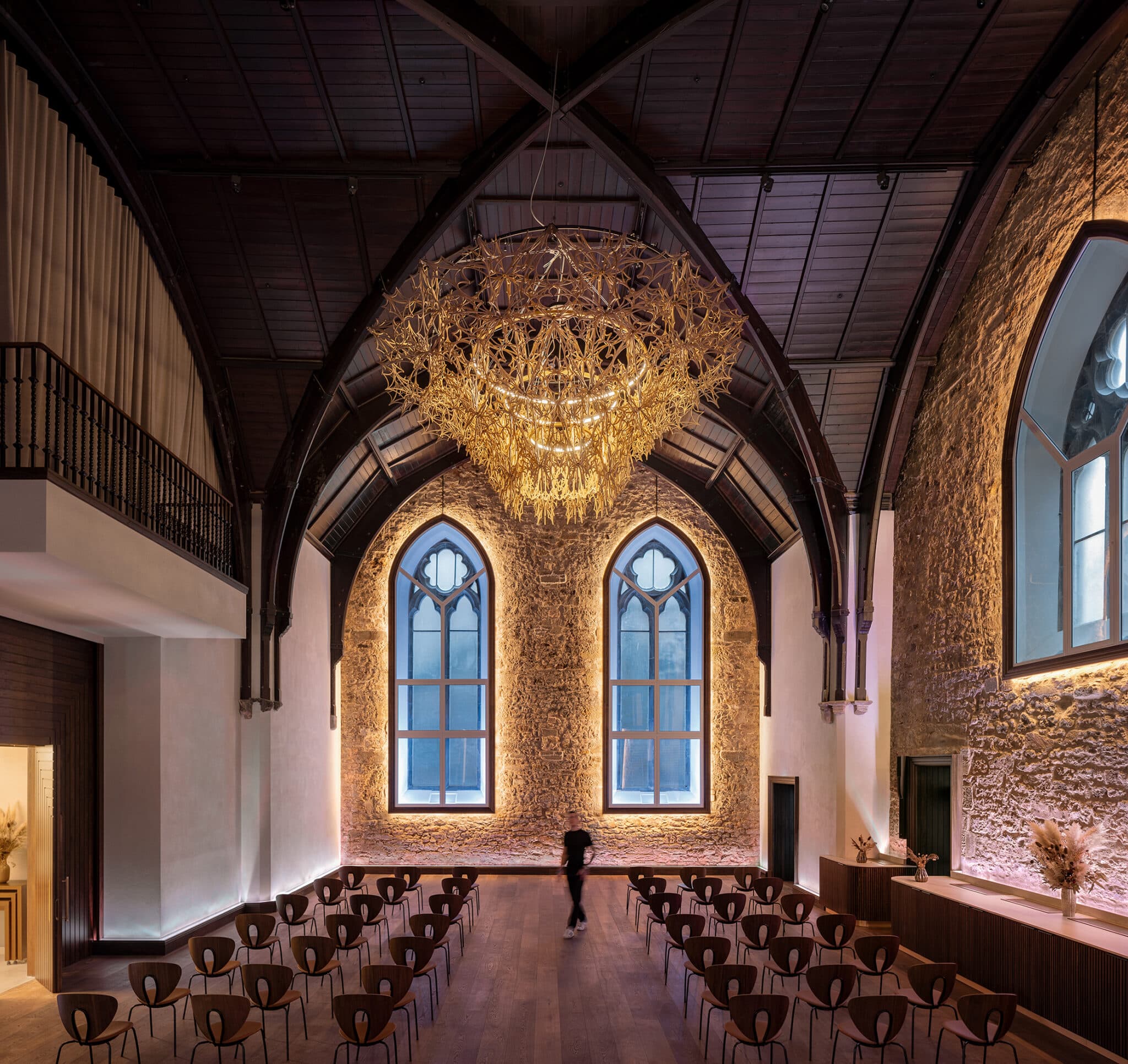
Inspired by the stone tracery found in European cathedrals, Mamou-Mani created a 3D-printed chandelier for a former gothic church at Virgin Hotels in Edinburgh, Scotland, using a mix of PLA and brass powder.
NaaroBack to the biomaterial. If it’s compostable, is there something that keeps it from disintegrating?
That’s a really good question because there is a contradiction between the idea of sustainable or durable and biodegradable, which is the opposite. The material we use, PLA, is a nice middle ground because it’s not going to compost or degrade on its own—you need to activate it in an industrial composter with the right humidity, temperature, and enzymes. But it doesn’t degrade on its own. The Wow House installation, for example, has been reused and reinstalled for three years now, and it hasn’t changed.
Tell us about some of the larger architectural projects you’re working on.
We’re designing a factory for helium airships in the South of France. It’s 300 meters long. Because we don’t have the capacity to fabricate it, we’re using these shelf systems—we put them in the computer, and then work with our algorithms to optimize it. Usually hangars are just shaped like cylinders, but by adding a curvature and the computer [optimize it], we actually managed to reduce the steel by 50 percent compared to a traditional hangar.
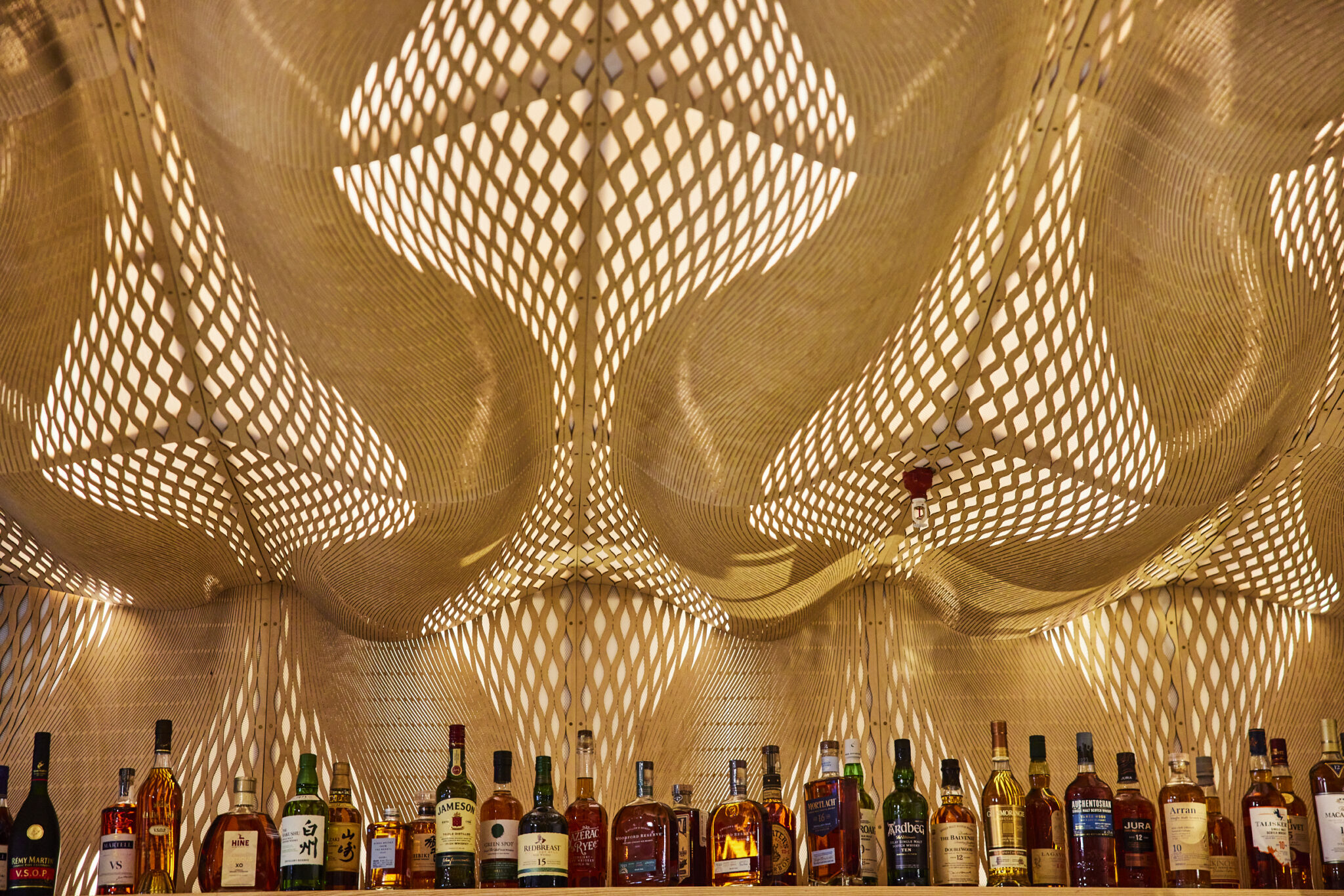
Fab.Pub printed a series of geometric elements to create The Wavery—a combination of “wave” and “reverie”—for Fortnum & Mason in London.
David LotusYour projects seem to combine an organic, global form with very site-specific elements and thinking about how people are interacting with the space. The Burning Man pavilion was one— can you talk a little bit about that design process?
The Burning Man project was answering a brief, which was basically [the client asking for] a secular temple. The idea was that when you enter the temple, you would be by yourself in an intimate setting, and then as you go through the building, slowly you end up in a [communal] space where you can connect with others. All of a sudden, you’re in this central space where everyone is crying, letting go together. It’s a beautiful experience and the architecture really reflects that.
What do you hope people can gain from interacting with your fabrications or your architectural designs?
I guess a sense of freedom, because when you see the architectural world or the product world, everything is so perfect and mass produced and sort of impermeable. You don’t feel like you feel it’s been done for you. You have a sense of passivity. We want [our projects] to give people a sense of empowerment and show that everyone can be part of this creative act.

